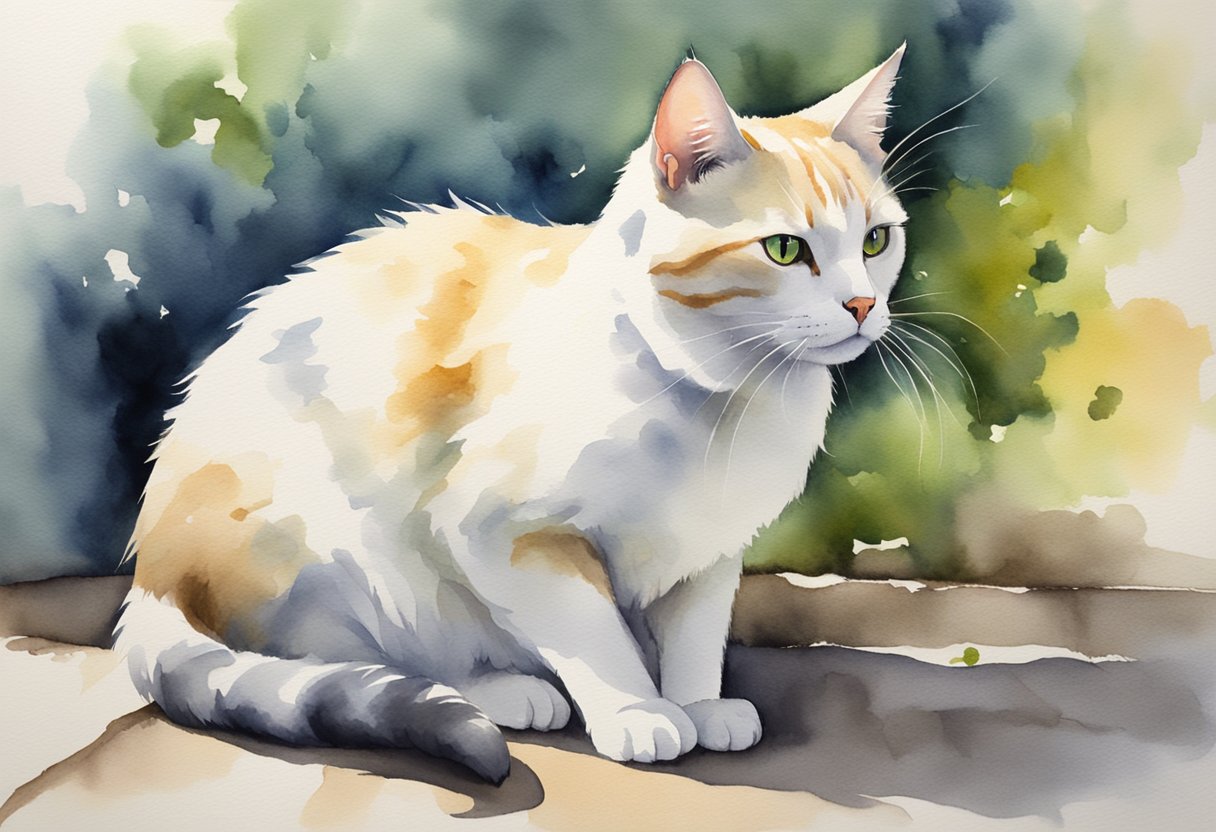Tail loss in cats is a rare and troubling occurrence that often alarms cat owners. While cats use their tails for balance and movement, and as a tool for communication to express emotions, it’s worth noting that there are several health-related reasons that could lead to tail loss.
For instance, a cat’s tail could fall off due to severe injury or trauma, such as if it’s unfortunately caught in a door, or if a car hits the cat. Bacterial or fungal infections can also lead to necrosis, where the tail tissue dies and potentially falls off.

As a caring cat owner, you’re likely aware of how important a tail is to your feline friend. It’s not just an accessory; it’s an integral part for maintaining equilibrium and facilitating agile movements. Cats with tail injuries may exhibit changes in balance or a reduced ability to communicate subtleties through tail positioning.
Your vigilance can play a role in early detection of issues such as feline hyperesthesia syndrome, where the cat may incessantly chew or lick its tail due to increased sensitivity.
Reasons Behind Tail Loss in Cats
When your feline friend’s tail is at stake, understanding the ins and outs of potential problems can be a lifesaver. The tail is not just an accessory; it’s a pivotal part of your cat’s anatomy for balance and communication.
Anatomy and Importance of a Cat’s Tail
A cat’s tail is an extension of its spine, comprised of muscles, vertebrae, nerves, skin, and fur. This structure grants not only an expressive tool for non-verbal communication but also aids in maintaining stability and coordination during movement such as climbing and jumping.
Common Causes and Types of Injury
Tail injuries in cats can arise from various accidents or mishaps. Common causes include trauma, such as being stepped on or caught in a door, and can lead to fractures or nerve damage. More severe cases like tail de-gloving, where the skin is stripped from the tail, often result from vehicle encounters.
Signs of Tail Problems and Veterinary Diagnosis
Be watchful for signs of tail issues like pain, swelling, or sensitivity to touch. Cats might excessively lick at their tail, or you may notice behavioral changes and alterations in tail movement. A veterinarian can assess these symptoms and may deploy X-rays or other diagnostic tools for a clearer picture.
Special Cases: Manx Cats and Related Conditions
Manx cats, naturally tailless due to a genetic mutation, may sometimes suffer from spine-related issues. Other conditions, such as feline hyperesthesia syndrome, may cause excessive grooming or self-mutilation which can affect the tail.
Preventive Measures and Home Care for Cat Owners
As a cat owner, you should ensure a safe environment to lower the risk of injuries. Regular grooming and observation can help you detect any abnormalities early. Keeping a good relationship with your vet and up-to-date with veterinary check-ups also plays a crucial role in prevention.
Treatment and Management of Tail Loss
If tail loss occurs, treatment options vary from medications to control pain and infection to, in serious cases, surgeryor amputation. Recovery care at home is essential, and you’ll need to follow your vet’s instructions closely, including administering medications and keeping the wound clean.

My name is James, and welcome to FAQCats!
Along with our team of cat owners, expert pet enthusiasts, and pet professionals, we aim to write engaging helpful, engaging content about cats. At FAQCats we strive to provide content that’s accurate and fun to read. Our team writes about everything related to cats; even the most complex of topics. Through extensive research and caring for our own fur-pals, we’re able to provide something cat owners worldwide will love. Have a look around, and leave us feedback anytime!

